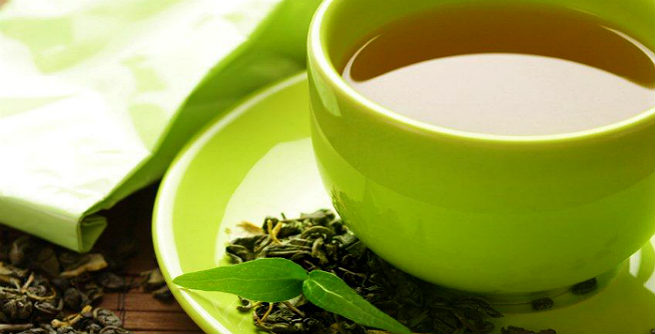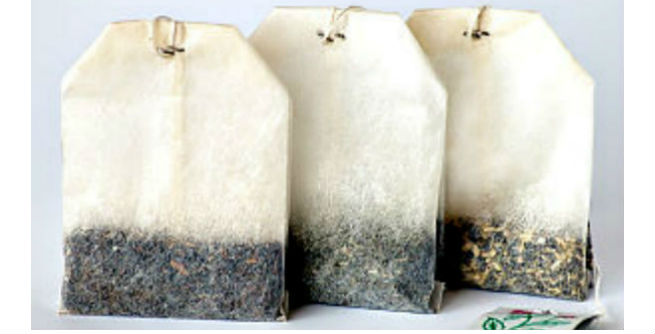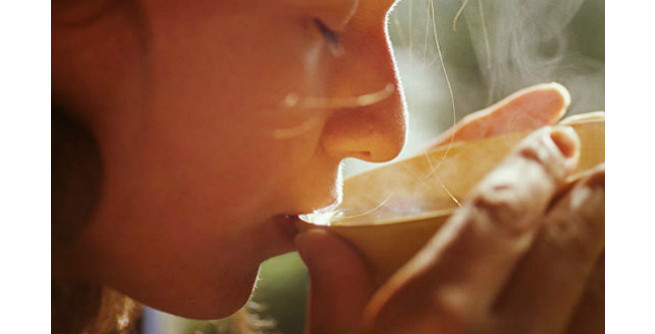Delightful green tea, with its vibrant color and exquisite flavor, has earned a reputation as the healthiest tea option. However, amidst its wealth of antioxidants, there’s a notable downside – caffeine content—an eight oz. A cup of green tea carries 8 to 30 mg of caffeine, relatively lower than some counterparts but a consideration nonetheless.
To savor this refreshing and healthful beverage without being concerned about caffeine effects, adopt a few essential tips to minimize its presence. Here’s a guide on how to enjoy green tea worry-free of caffeine impacts. (1) (2)
Learn About It
The first and foremost step for curtailing the caffeine content of your green tea should be to know about it. We all have a misconception that ‘tea flush’ or the fresh terminal bud and the two leaves adjoining it together form the safest combination for a refreshing beverage. Well, this is of the highest quality and makes the sweetest tea. But being the youngest part of the tree, it also contains the most significant amount of caffeine. So, avoid new tea leaves.
Stay Away from Teabags
Green teabags might look quite tempting, especially when we seek a quick, easy, and convenient procedure for brewing. However, the amount of caffeine in loose green tea leaves is considerably more significant than in teabags. In addition, green teabags constantly lose the actual quality and flavor of the tea, which is not at all desired by us.
Pick High-Grade Tea
Many of us believe that the lighter the color of green tea is, the lesser the caffeine content. But the truth is that ‘color’ is not a reliable indicator of this purpose. Even the most transparent or beautifully green-colored tea can contain a higher level of caffeine than a dark tea concoction. You buy the most caffeinated version of the beverage by choosing the best quality green tea, as all high-grade teas are made of tea flush. But they also contain many theanine (an amino acid contributing to green tea’s remarkable freshness and sweetness) and catechins (a pool of antioxidant compounds), which work on the caffeine and significantly reduce its effects.
Know Your Tolerance Level
According to experts, a person should not take more than 300 mg. of caffeine daily. But when it comes to lessening the green tea caffeine, you must get accustomed to your tolerance level first. Green tea has relatively low caffeine contestants like coffee, black tea, and other similar stimulants. Moreover, green tea caffeine works on our bodies entirely differently. Being full of the ‘caffeine antagonist’ theanine (almost 60%), it counteracts the effects of caffeine and soothes our brain cells. Drinking two or three cups of green tea a day means 90 to 105 mg. of caffeine intake. Go for it if it doesn’t bother you with headaches and nervousness. You can start with half or a cup daily and go slow for optimum safety.
Enjoy It Super Hot!
Never wait for your green tea to be cooled down. It is the time of brewing the tea leaves when the molecules of theanine and catechins get combined with the caffeine in the presence of boiling water, which eventually diminishes the latter’s effects. Once the cup of tea cools off, the process reverses, and the catechins break down. As a result, more caffeine is released into the concoction.
Discard the First Infusion
While most tea compounds take some time to get processed during brewing, caffeine dissolves in water very quickly. So, it is always advisable to steep the tea leaves for 3-5 minutes first and throw the infusion away. This first infusion of green tea soaks up almost 50% to 70% of caffeine, depending on the length of soaking. However, this process may make you compromise the flavor and aroma of your tea. But it will protect you from the side effects of caffeine.
Reduce the Strength of Your Tea
If you find yourself intolerant of caffeine, try reducing the strength of your green tea and brew it only half strength. Of course, you need loose green tea leaves instead of teabags for this. While most of us brew 1-2 teaspoons of tea leaves for a cup, you must use (1/2) or one teaspoon. Once your body gets adjusted to it, increase the strength gradually.
If you are still doubtful about the caffeine content of your green tea or want to go for the safest option, check the product’s label while purchasing. There are lots of decaffeinated green teas available in the market. Or you may at least go for the teas that are very low in caffeine naturally.
Summary
Green tea, celebrated for its health benefits, harbors caffeine, posing some concern. Tips for minimizing caffeine effects include avoiding new tea leaves, steering clear of teabags, opting for high-grade teas rich in theanine and catechins, knowing personal caffeine tolerance, consuming hot tea for minimized effects, discarding the first infusion to reduce caffeine content, and adjusting tea strength gradually. Checking labels or choosing decaffeinated or naturally low-caffeine green teas is advised for those sensitive to caffeine. Personalizing green tea consumption based on these insights can enhance enjoyment without compromising caffeine-related health concerns.



